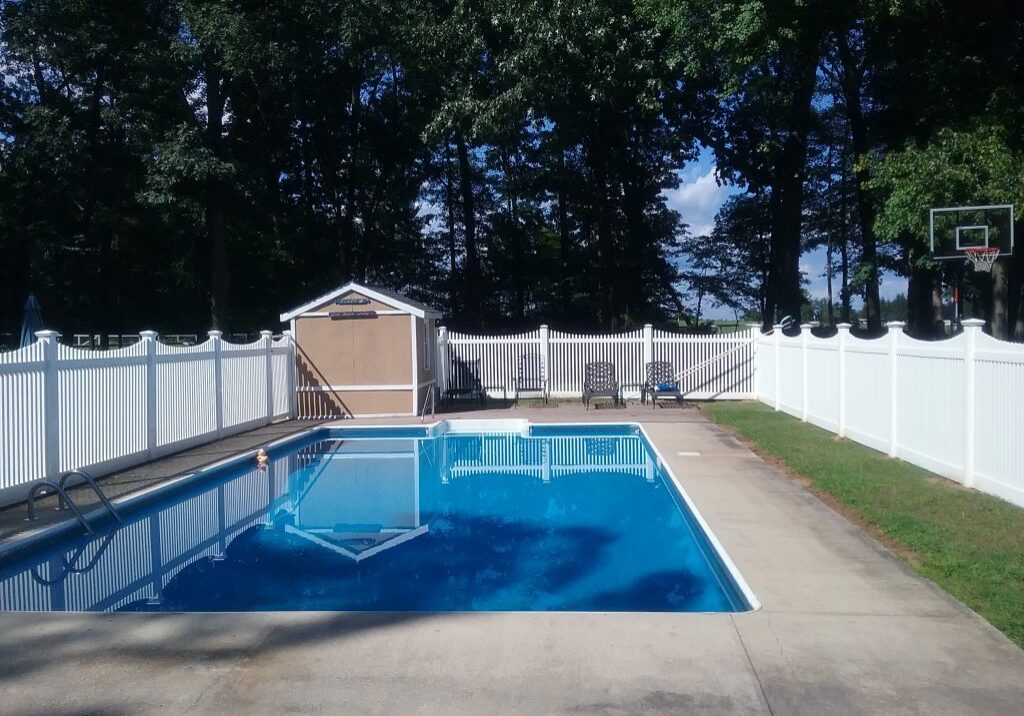Featured
Setting up a fencing on your home can include personal privacy, security, and visual charm, but before you begin digging openings and establishing posts, it's important to recognize whether you need a permit. The kind of fencing you intend to set up, where it will be positioned, and local zoning regulations can all affect the allowing process. Not obtaining the needed licenses might cause fines or the demand to remove the fence. Right here's what you require to know to guarantee a smooth setup procedure.
Why Are Allows Required for Fencing Installment? Permits are essential for making sure that your fence adheres to local zoning laws and building regulations. These guidelines aid make sure the security of your residential property and the bordering area. Furthermore, permits prevent disagreements with neighbors or neighborhood authorities, particularly when it involves residential property lines, elevation limitations, and total design.
In several cases, local authorities need authorizations to control points like visibility at junctions or the closeness of a fence to public rooms like walkways or roads. Permits also assist ensure that fences are mounted properly and safely, especially when it concerns distinct products or high fencings.
Common Sorts Of Authorizations for Fencing Installation. The kind of fence you wish to install and your place will certainly establish which licenses are needed. Below are the most typical types:
Building License. A structure authorization is normally needed for fencings that exceed specific elevation restrictions (usually over 6 feet), lie near a public roadway or walkway, or are made from particular materials. Structure permits make sure that the framework fulfills local building regulations, consisting of safety criteria.
Zoning Authorization. Zoning licenses are frequently required to make certain that your fencing abides by regional zoning legislations. Zoning laws can define where a fencing can be positioned on your building (e.g., along home lines or ahead backyards), as well as set limitations on fencing height. These laws are created to protect against obstructions that can impact traffic security or area looks.
![]()
Setback License. In some areas, you may require a trouble license to position your fencing a specific distance from residential property lines, roadways, or energies. Obstacles are intended to keep correct room between structures and property boundaries, reducing potential problems with next-door neighbors or public facilities.
Homeowners Association (HOA) Authorization. If your residential or commercial property belongs to a neighborhood controlled by a Homeowners Association (HOA), you will likely need approval from the HOA prior to setting up a fence. HOA guidelines often control the style, height, materials, and also color of fencings, making certain that they match the total aesthetic of the area.
The Process for Acquiring a Fence Permit. To obtain a fence license, you generally require to contact your local city or area workplace. A lot of locations have a building department or planning office where you can request permits. The procedure entails finishing an application and supplying in-depth info regarding your proposed fencing, including:
Fencing style (materials, elevation, style) Location on the home. Residential property line information (for accurate positioning) Oftentimes, a site strategy showing the suggested fencing's position will certainly be needed. You may likewise require to pay an authorization charge, which can vary based upon place and the intricacy of the job.
When you submit your application, the regional authorities will evaluate it to ensure the fence abides by regional laws. Depending on your location, you might additionally need to schedule an assessment or permit for a home study.
When Do You Not Required a License? In many cases, a license may not be needed. Usually, you could not require an authorization if:
![]()
The fence is under a specific height (frequently 3-4 feet for front lawns) You're replacing an existing fence with the very same kind and height. The fencing is short-lived (such as a garden fence) It's always a good concept to examine with your neighborhood building or zoning department to validate the requirements, as regulations can vary.
Effects of Not Obtaining a Permit. Stopping working to obtain the essential permits can cause different concerns. One of the most usual effect is being fined or asked to get rid of the fence. Sometimes, you may need to re-install the fencing according to code, which could be expensive and lengthy. Furthermore, not complying with the proper permitting process can develop issues with next-door neighbors, specifically if your fence expands beyond your building line or does not meet elevation or design requirements.
Verdict. Before mounting a fence, see to it you know the regional regulations and whether you require an authorization. It is essential to get in touch with your local structure or zoning workplace, in addition to your HOA if appropriate, to recognize what's needed. By getting the appropriate licenses, you'll make sure that your fence is lawfully certified, secure, and totally free from future difficulties. Taking this extra action will certainly save you time and money in the long run while providing peace of mind that your job is on the best track.
Why Are Allows Required for Fencing Installment? Permits are essential for making sure that your fence adheres to local zoning laws and building regulations. These guidelines aid make sure the security of your residential property and the bordering area. Furthermore, permits prevent disagreements with neighbors or neighborhood authorities, particularly when it involves residential property lines, elevation limitations, and total design.
In several cases, local authorities need authorizations to control points like visibility at junctions or the closeness of a fence to public rooms like walkways or roads. Permits also assist ensure that fences are mounted properly and safely, especially when it concerns distinct products or high fencings.
Common Sorts Of Authorizations for Fencing Installation. The kind of fence you wish to install and your place will certainly establish which licenses are needed. Below are the most typical types:
Building License. A structure authorization is normally needed for fencings that exceed specific elevation restrictions (usually over 6 feet), lie near a public roadway or walkway, or are made from particular materials. Structure permits make sure that the framework fulfills local building regulations, consisting of safety criteria.
Zoning Authorization. Zoning licenses are frequently required to make certain that your fencing abides by regional zoning legislations. Zoning laws can define where a fencing can be positioned on your building (e.g., along home lines or ahead backyards), as well as set limitations on fencing height. These laws are created to protect against obstructions that can impact traffic security or area looks.

Setback License. In some areas, you may require a trouble license to position your fencing a specific distance from residential property lines, roadways, or energies. Obstacles are intended to keep correct room between structures and property boundaries, reducing potential problems with next-door neighbors or public facilities.
Homeowners Association (HOA) Authorization. If your residential or commercial property belongs to a neighborhood controlled by a Homeowners Association (HOA), you will likely need approval from the HOA prior to setting up a fence. HOA guidelines often control the style, height, materials, and also color of fencings, making certain that they match the total aesthetic of the area.
The Process for Acquiring a Fence Permit. To obtain a fence license, you generally require to contact your local city or area workplace. A lot of locations have a building department or planning office where you can request permits. The procedure entails finishing an application and supplying in-depth info regarding your proposed fencing, including:
Fencing style (materials, elevation, style) Location on the home. Residential property line information (for accurate positioning) Oftentimes, a site strategy showing the suggested fencing's position will certainly be needed. You may likewise require to pay an authorization charge, which can vary based upon place and the intricacy of the job.
When you submit your application, the regional authorities will evaluate it to ensure the fence abides by regional laws. Depending on your location, you might additionally need to schedule an assessment or permit for a home study.
When Do You Not Required a License? In many cases, a license may not be needed. Usually, you could not require an authorization if:

The fence is under a specific height (frequently 3-4 feet for front lawns) You're replacing an existing fence with the very same kind and height. The fencing is short-lived (such as a garden fence) It's always a good concept to examine with your neighborhood building or zoning department to validate the requirements, as regulations can vary.
Effects of Not Obtaining a Permit. Stopping working to obtain the essential permits can cause different concerns. One of the most usual effect is being fined or asked to get rid of the fence. Sometimes, you may need to re-install the fencing according to code, which could be expensive and lengthy. Furthermore, not complying with the proper permitting process can develop issues with next-door neighbors, specifically if your fence expands beyond your building line or does not meet elevation or design requirements.
Verdict. Before mounting a fence, see to it you know the regional regulations and whether you require an authorization. It is essential to get in touch with your local structure or zoning workplace, in addition to your HOA if appropriate, to recognize what's needed. By getting the appropriate licenses, you'll make sure that your fence is lawfully certified, secure, and totally free from future difficulties. Taking this extra action will certainly save you time and money in the long run while providing peace of mind that your job is on the best track.
Latest Posts
Discover WyHy FCU – Key Advantages for Your Future
Published May 24, 25
1 min read
Check Out the Premier Auto Repair Coupons in Montclare, Chicago
Published May 23, 25
1 min read
Explore WyHy Federal Credit Union – Exclusive Benefits for Your Future
Published May 23, 25
1 min read